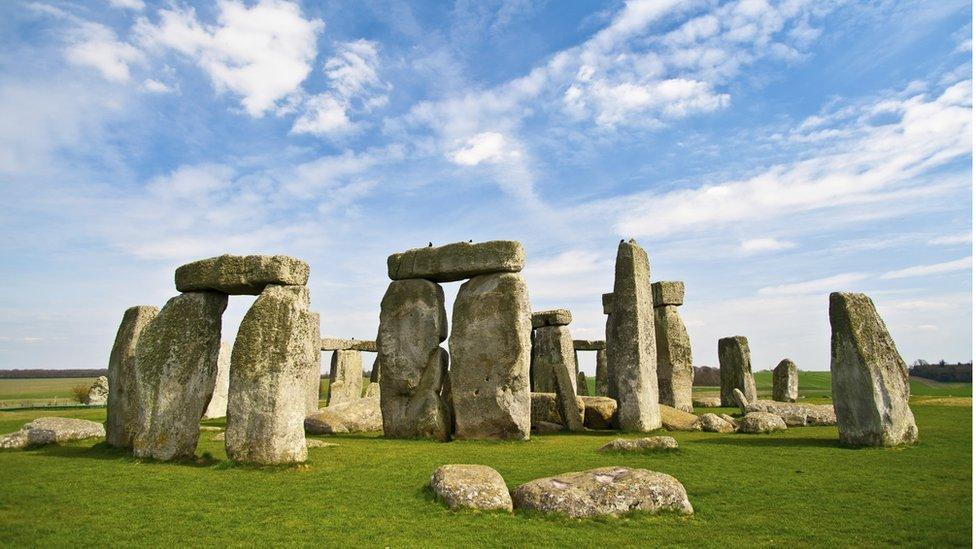Stonehenge burials show 'surprising degree' of gender equality
- Published
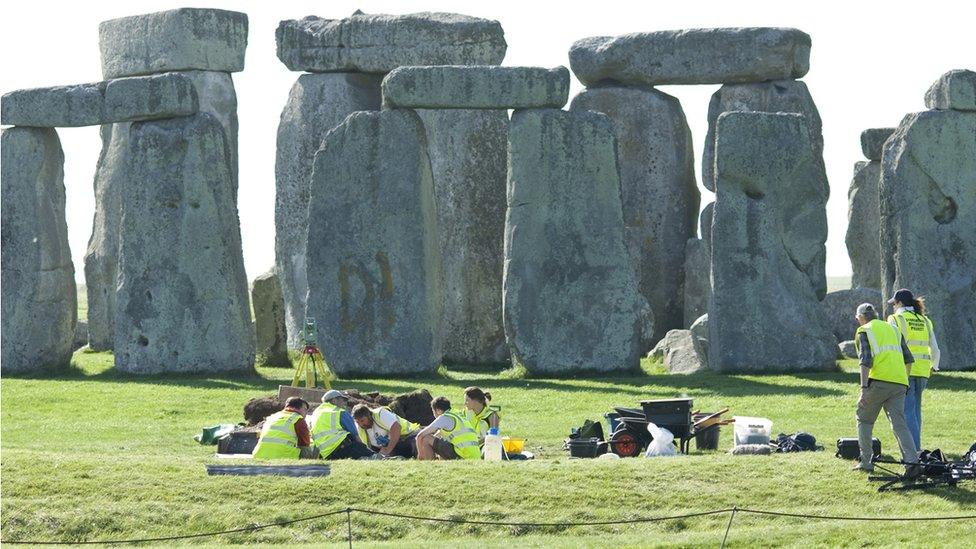
Results of the dig which took place in 2008 have just been published
A new study of prehistoric bones discovered at Stonehenge has found around half belonged to women.
In 2008 archaeologists first explored the site in Wiltshire examining the cremated remains of some 200 adults.
Researchers said their findings showed a "surprising degree of gender equality" despite artists portraying prehistoric man as in charge of the site "with barely a woman in sight".
The findings are reported in the magazine British Archaeology, external.
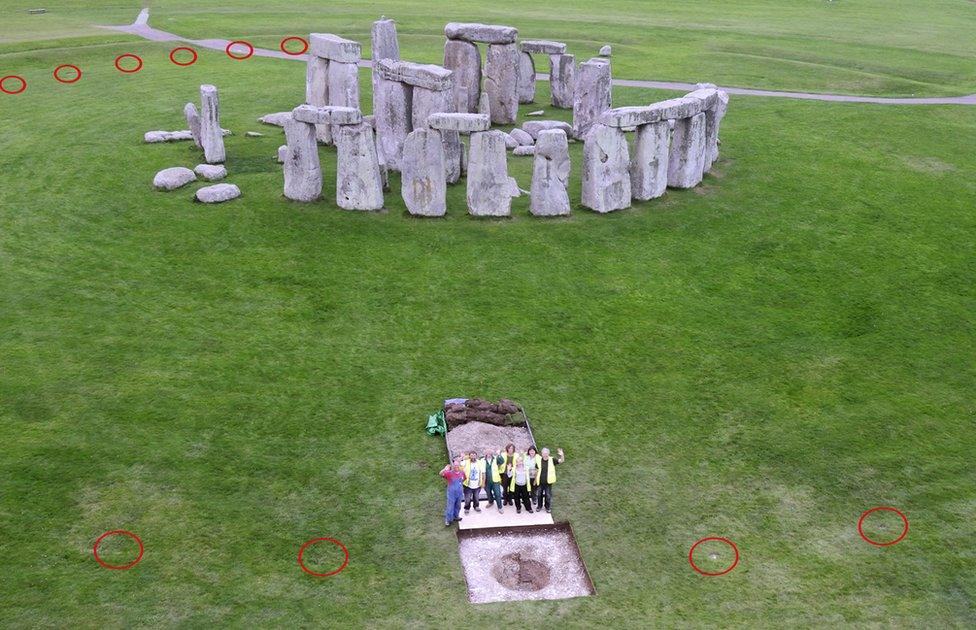
Most of the material dug up in the 1920s from the periphery of the stones was reburied in Aubrey Hole seven (seen excavated in 2008)
The study showed the findings are important because burial at Stonehenge was likely to have been reserved for selected people of higher status.
It also contrasts with the evidence from older Neolithic tombs in southern Britain, with their higher ratios of adult males to females.
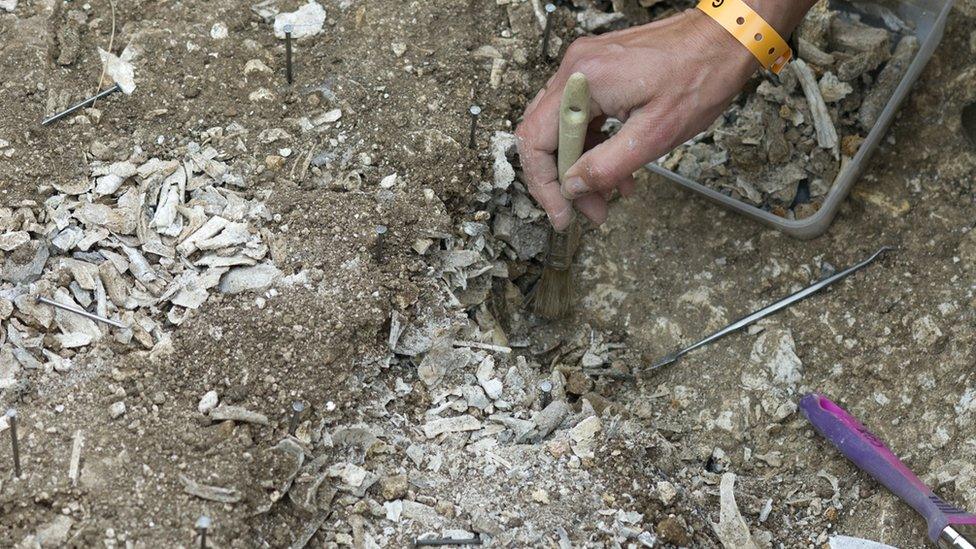
Some 45kg (99lbs) of bone fragments were recovered
Christie Willis, a PhD student at University College London and an expert on human remains, sorted through some 45kg (99lbs) of bone fragments.
Her task was to identify which part of the skeleton each fragment came from and to then establish the age and sex of the remains.
She identified 14 females and nine males - some of them children.
Ms Willis said the samples had originally been place in a series of Aubrey Holes around the periphery of the site - which were originally excavated in the 1920s by William Hawley.
"These were dug up and reburied in Aubrey Hole seven with the hope that one day there would be a breakthrough to allow them to be analysed.
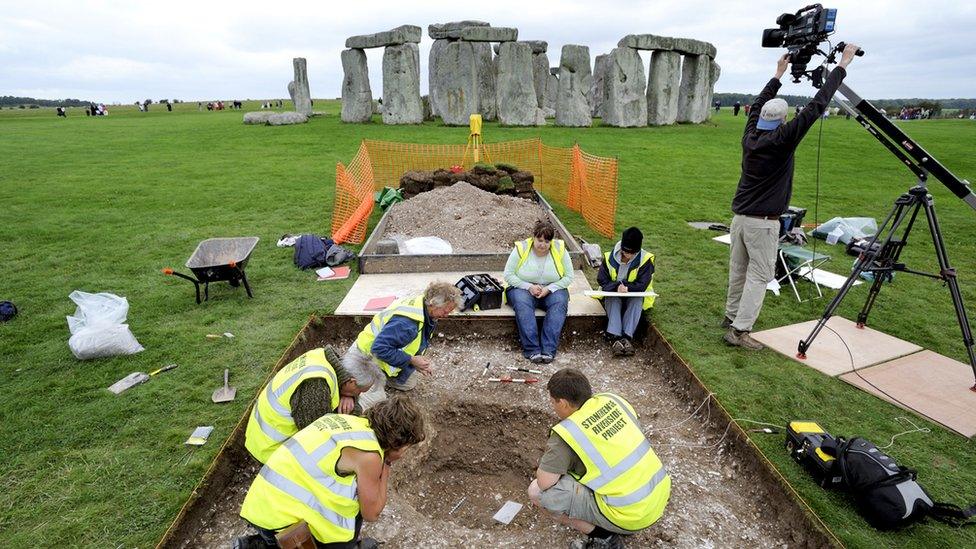
The archaeologists said their work had taken four years in total
"Because of this the fragments have become co-mingled - or mixed up - which is why the work has taken so long."
The fragments were also sent to universities in Oxford and Glasgow to be radiocarbon-dated.
Researchers at Teeside University also looked at how hot the cremation fires were, and how long the bones were in there for.
- Published27 January 2016
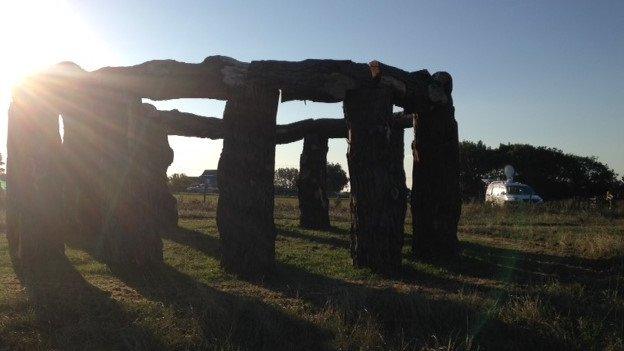
- Published22 December 2015
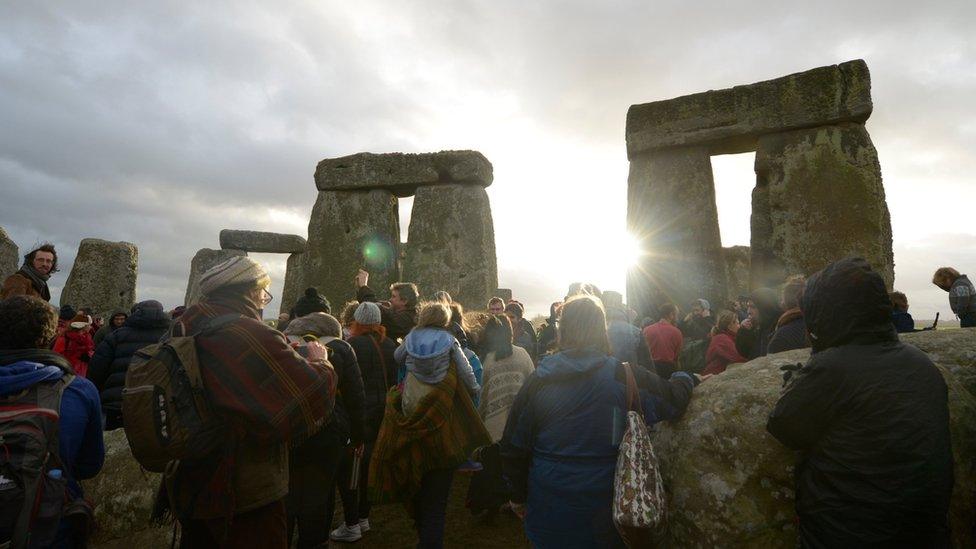
- Published2 December 2015
